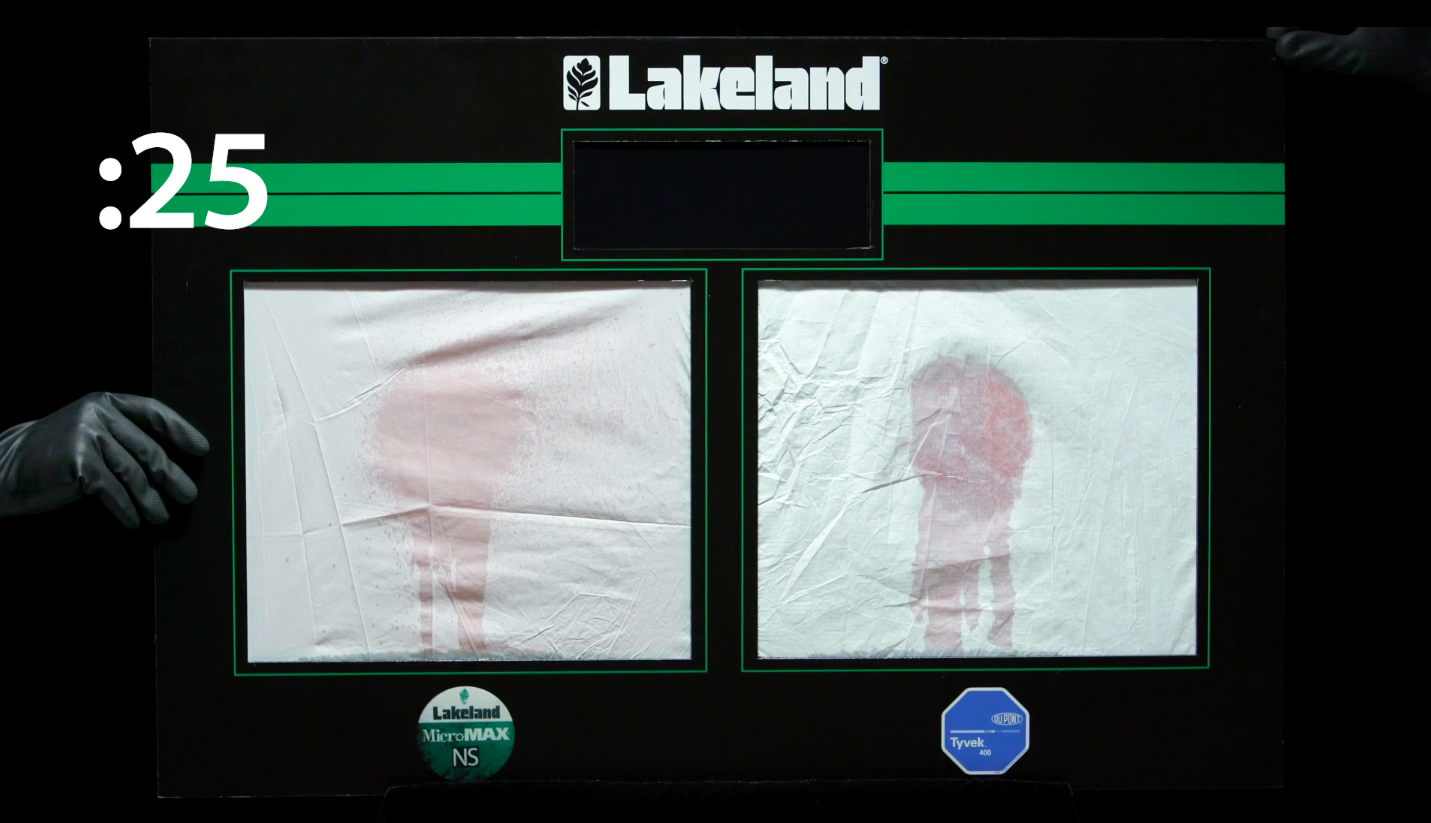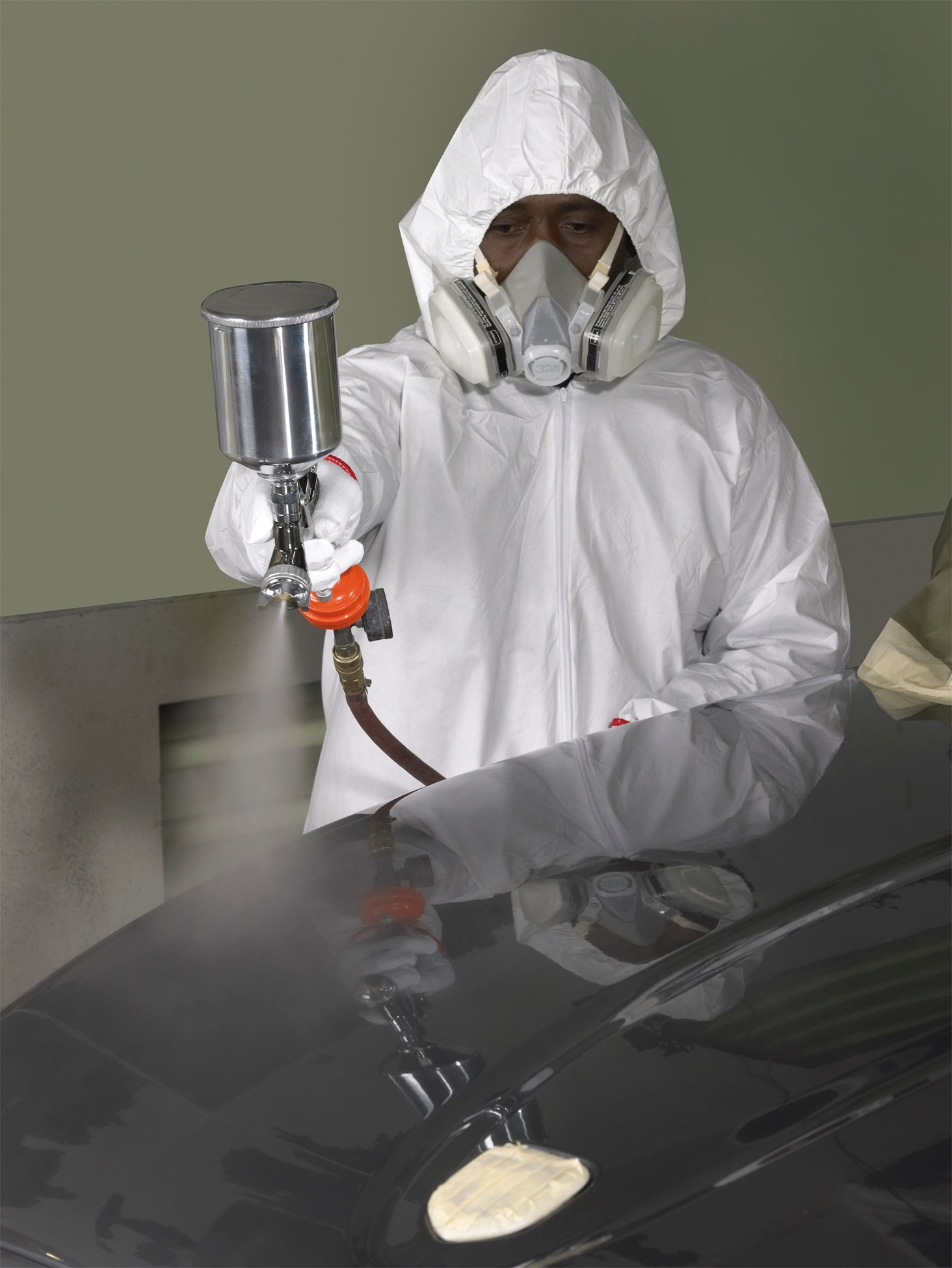Environments where workers require protection from hazardous chemical or liquid exposure need the proper disposable protective clothing to shield them from aerosol mist, paint, liquid sprays, dry particle aerosols, or light liquid hazards. Industrial hygienists, safety managers, and wearers of safety apparel often rely on standardized fabric testing procedures to evaluate the effectiveness of barrier protection.
Liquid penetration testing of protective apparel is essential for general purpose or industrial workplaces because little is known -or documented- about how the vast numbers of chemicals used today react against human skin. Those responsible for workplace safety understand that what is unknown, by definition, is unsafe. As a result, safety managers rely on fabric testing results when deciding how they source disposable protective garments.
Liquid Penetration and Permeation Testing for Disposable Coveralls
How is protective clothing tested for barrier protection, and what can the tests achieve? Two methods for testing protective garments are the industry standard: liquid penetration tests and liquid permeation tests. Each evaluates different mechanisms of chemical protection.
Penetration garment testing evaluates how or if a liquid or chemical can pass through the clothing material, such as pores, closures, seams, and other openings.
Permeation garment testing evaluates how a liquid or chemical is absorbed into the surface of a garment’s fabric, the diffusion of the liquid through the fabric, and desorption from the opposite side.
Pressure levels are an important component in each test because they affect the force of a liquid or chemical as it’s made to penetrate or permeate the fabric. Without adding pressure to the application, testers would only evaluate repellency of the fabric or clothing material.
Typical fabric tests evaluate the penetration of liquid on the fabric and the permeation of liquid evaporation through the fabric. What if the chemical or liquid is being sprayed with pressure behind it? Some testers also fail to disclose the duration of testing or the implications of the pressure. This video explains further…
{% video_player “embed_player” overrideable=False, type=’scriptV4′, hide_playlist=True, viral_sharing=False, embed_button=False, width=’1920′, height=’1080′, player_id=’26647408923′, style=” %}
Testers consider several factors when evaluating penetration and permeation test results, including pressure and test duration in addition to surface energy, viscosity, and chemical interactions between the garment and hazardous liquid. In both of our tests comparing Lakeland’s disposable coverall fabric to the competitor’s product, we spray two different products six inches from the fabric, then let the liquid set for 30 seconds before revealing the results.
Superior Liquid Barrier Protection
As shown in the video above, Lakeland’s MicroMax® NS disposable protective clothing demonstrates superior liquid barrier protection when compared to other protective wear alternatives, providing effective protection from aerosol mist and light liquid hazards.
MicroMax® NS garments are strong, economical and lightweight, and feature a high moisture vapor transmission rate (MVTR) with added comfort for the wearer. Wet or dry, MicroMax® NS is perfect for work environments where dirt, grime, splashes, and spills are present. Additionally, MicroMax® NS passes both ASTM F1670 and ASTM F1671 for bloodborne pathogens and viral protection.
Do you work in a general-purpose or industrial setting that requires disposable protective apparel? If you’re looking for an innovative option that provides excellent liquid or chemical protection, learn more about MicroMax® NS by Lakeland.



